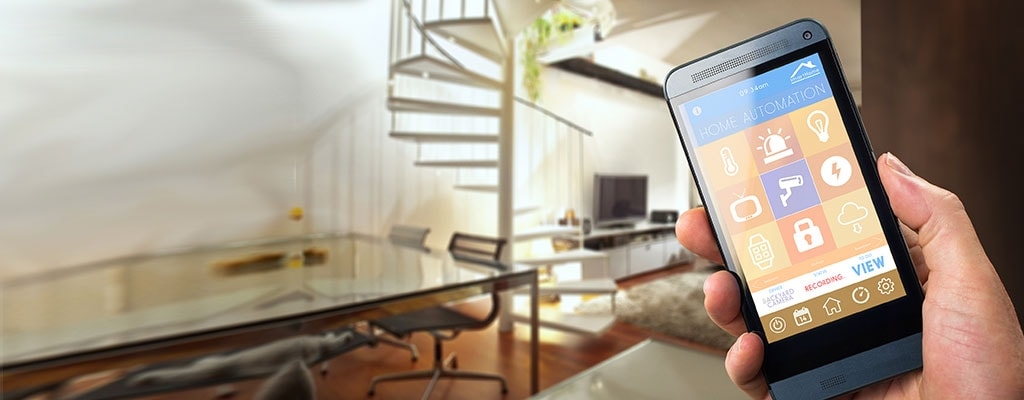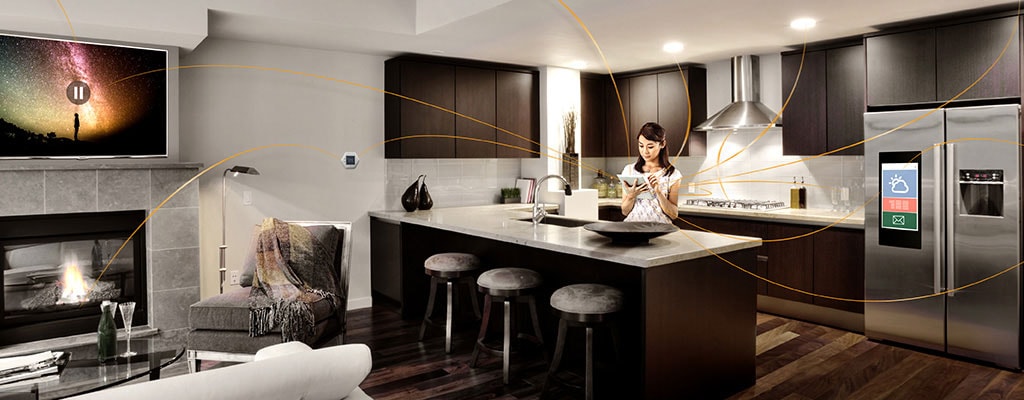
Trend Insight
Connecting Our Lives
We live in an increasingly sensor-enabled world. We are becoming more comfortable with systems that monitor in exchange for increased safety and offloading some of our more mundane tasks. By: Ronald M. Weber, Global Industry Manager, Building Automation
Our dependence on sensors is increasing regularly to keep us safe, keep us comfortable, and keep us in control. Sensors are playing an ever expanding role in our lives. Without realizing it, we have become accustomed to living with – and relying on – sensors every day. For example, at home we rely on a sensors in our clothes dryer to sense when the clothes are dry and stop drying, saving time and energy. Automatic lights are becoming more prevalent in our lives, turning on when they detect our movement and turning off after we leave to help conserve energy. Perhaps the best example to showcase our dependence on sensors is today’s increasingly connected car.
Expanding Our Perceptions
Would anyone today consider driving a car without an ABS system that incorporates sensors to provide controlled and dependable braking in all conditions? Turn the key and the car’s engine starts instantly and runs optimally because of the multitude of sensors monitoring temperature, fuel flow, fuel pressure, and airflow. In accident conditions, we expect the impact sensors in the vehicle to initiate the airbags to keep us safe and also shut down the fuel flow to prevent a fire. Increasingly, our cars are becoming perceptive machines with the capacity to self-diagnose problems and propose solutions. Within only the past 30 years or so, sensors have transformed driving, making cars safer, more reliable, more efficient and less complicated to properly maintain.
"The reliance on instinctive driving meant the poor driver missed or misinterpreted the physical cues a car provided, often with less than desirable results."
As with all innovations, there are detractors who maintain that our increasingly sensored cars have taken the “feeling” out of driving a car. There is some truth to their claims since in the past, we needed to rely on our basic instincts to safely drive a car. We felt, we listened, and we saw the way the car handled, including how it ran and how it reacted to conditions. The personal nature of these instincts meant the distinction between highly skilled and poorly skilled drivers was amplified. A skilled driver often responds quickly and effectively when handling the car in various conditions and relies on an innate sense of how the engine is running, how the steering is reacting, and how well the tires are gripping. The reliance on instinctive driving meant the poor driver missed or misinterpreted the physical cues a car provided, often with less than desirable results.

When cars are equipped with sensors, drivers and passengers enjoy advanced safety, comfort, and efficiency.
Even the mechanics of years past relied on their senses to hear and feel how a car and engine were running. Years before they had machines to analyze engine performance, the best mechanics knew how to listen to an engine and diagnose what was wrong with most being able to adjust the air/fuel mix simply by sound to optimize engine performance, for example. Of course, there were mechanics who were not so “tuned-in” with the car and often returned it to the owner not running any better than when they brought it in.
Transforming Our Expectations
The modern sensored car levels the playing field: The widespread use of sensors makes risky drivers safer drivers and less-attuned mechanics more precise in their analysis even before the car goes on a lift. A mechanic reading an engine control unit (ECU) can quickly and effectively determine what is wrong with an engine providing every mechanic with the information they need to affect a repair. Such capabilities make it more likely that the mechanic can correctly diagnose and repair the right problem – the first time. Without realizing it, each day we are becoming more comfortable living in a sensored world. In the case of our cars, sensors made them safer and more reliable. This idea can extend into our homes, where sensors today are by no means omnipresent to the extent they are in cars. The sensors in smoke detectors, for example, can detect the microscopic particles emitted early in the burn process. Not as obvious are the temperature sensors in our thermostats, washing machines, stoves, ranges, and furnaces. In a gas fireplace, thermopiles detect a pilot flame and trigger an automatic shutdown of gas if no flame is detected.
Without realizing it, each day we are becoming more comfortable living in a sensored world.

Sensors have transformed the way we live and how we expect to live. It is doubtful that any of us would even consider purchasing a brand new automobile that was not equipped with an airbag or ABS. Yet, not so long ago, these were considered luxury options. Similarly, it is unlikely any of us would even consider a home where our only heating control consists of throwing another log on the fire for more heat or opening a window to cool things down. We now expect our homes – whether it is a house one purchases or apartment one rents – to have a system for controlling our comfort. It is a necessity for us that our homes sense, control, and manage the heating and cooling system. We also expect our home to be compliant with local regulations, such as having smoke detectors to ensure that if a fire occurs, we have adequate warning.

In the future, many – if not most – of our daily routines are expected to become automated.
In the not so distant future, our homes will offer sensing capabilities far beyond what we can envision. At this point, homeowners today are familiarizing themselves with a variety of discrete home automation devices such as smart thermostats. As we become more familiar with these different technologies and as they meld into connected home systems, our expectations will shift, being driven by sensors. In the future, we will expect automation for many of our daily routines, such as setting interior climate preferences, locking/unlocking doors, turning on/off lights, activating/deactivating security, and even scheduling any maintenance as needed. To do this, sensors will need to be broadly deployed in the home and will need to serve multiple functions. Each room will need to incorporate multiple sensors that enable detection of occupancy, light level, temperature, humidity, and other factors that regulate inhabitant comfort. We may even become comfortable with unobtrusive video cameras to detect individual facial features and gestures as primary user interfaces to our connected homes.
The Crucial Question
Over the past few decades, as technology has evolved, we have proven that we are willing to give up some personal control for the convenience of automation made possible by sensors. There is yet a critical question we must address: Will we embrace our increasing reliance on sensors in our homes as we have in our cars? Time will tell. If recent history is any indicator, most of us will embrace the safety, convenience, reliability, and security that sensors provide us in our homes.

